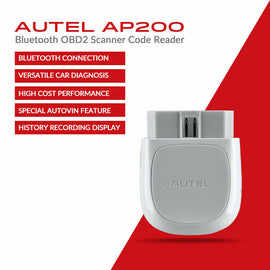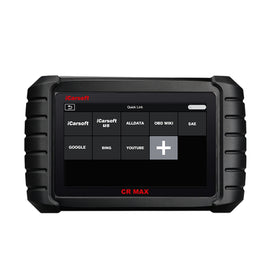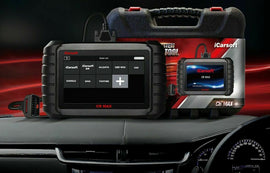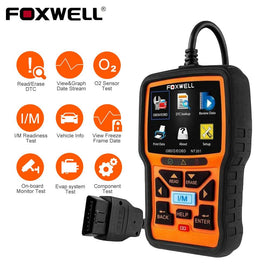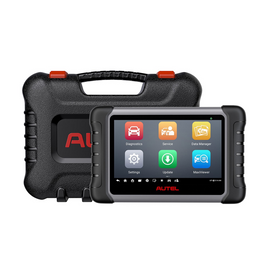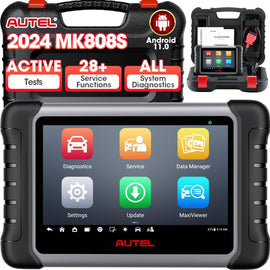Do you have concerns about your car's safety, or do you manage a fleet business and must maintain the security of your vehicles? Regardless, the best way to manage it is to have a GPS tracker in your cars.
From tracking location to monitoring driver behaviour, a GPS tracker offers much more than just theft protection. It’s now a common tool for car owners and businesses alike.
Now, you just have to think about how to install a GPS tracker in a car, and we are here to help.
Why Do You Need a GPS Tracking Device in Your Car?
You should install a GPS tracker on your car for various reasons. One of the most important reasons is to increase its security and ensure its location at all times.
Installing a tracking device dramatically improves the odds of retrieving a stolen car by providing real-time location tracking. You can send the coordinates to law enforcement so that they can locate your vehicle and prevent additional theft.
Businesses use GPS monitoring systems for anti-theft purposes and to monitor their drivers' behaviour, fuel consumption, and routes.
Installing a GPS system provides information on your driving patterns, such as speeding, braking abruptly, cornering, and other driving tendencies.
This information allows you to monitor harmful driving habits and receive further coaching to improve your driving. You will be notified immediately the next time your teen child speeds.
GPS-based applications can substantially benefit businesses such as automobile rental, emergency services, distribution, and plumbing.
However, many car owners are hesitant to install GPS trackers because they believe it requires technological expertise.
But let us tell you, you don't need any special skills for it.
Car tracker installation is simple.
How to Install a GPS Auto Tracker in Your Car, Step-by-Step
Ensure your car gets enough cellular and GPS satellite signals before installing a GPS tracker. Just follow these steps for DIY vehicle GPS tracker setup:
Step 1: Decide where to put the GPS tracker in the car
A GPS tracker can be installed in the dashboard, under the vehicle, under the passenger seat, in the bumper, under the carpets, in the sun visor, or on the car's top.
Step 2: Read the Manual of the GPS Tracker
Read the device's manual attentively. It helps people grasp the device's full description.
Step 3: Connect the Power Supply
You can select a 3G or 4G GPS tracker. Simply choose one that is wireless, powered by its own battery, plugs into your car's OBD port, or is connected to a stable power source.
To discover the ignition wire that will provide continuous power to your GPS in three-wire setups, unscrew a few panels. Unplug the negative terminal of the battery.
The red wire is positive, the black negative, and the white neutral. Loop each one carefully into the appropriate spot. Consult the vehicle's wiring schematic to ensure your wire configuration is correct.
Step 4: Download the app on your smartphone
The bulk of GPS tracking gadgets are operated using a smartphone app. Installing a tracking app on your smartphone is the first step in this process. You can find your car by following these instructions.
Step 5: Vehicle Tracking in Real Time
The application on the tracking device unit allows you to view your tracking device's GPS signal in real time. You can now track your car's whereabouts at any time by using the app or sending an SMS.
Tips to Avoid Any Malfunction during car GPS tracker installation
An improperly mounted GPS tracker could damage the device and cause it to malfunction. There are a few simple rules to follow when setting up a GPS tracker. These instructions will help you install GPS trackers correctly.
-
It is best to place the GPS tracker somewhere that is difficult to see or reach. This will lessen the chance that the driver or other passengers will destroy or remove the tracker.
-
Installing the device in a service access area, like behind the fuse box or under the dashboard, is required.
-
The gadget needs to be firmly attached to a level surface. Zip ties or double-sided sticky tape should be used to secure it. Mounting the device with its face upward is recommended.
-
Keep the GPS tracker away from cables and metal objects. Additionally, the device cannot be fixed to a moving or heat-emitting component, as this could harm it.
-
The gadget responds to movement because it has an integrated accelerometer. It is best to find a stable installation location that is not prone to tremors.
-
When the device is turned off, insert the SIM card into it.
-
The GPS tracker antenna should be situated near the window, as is practical, behind the dashboard. It needs to be installed with its head up and uncovered.
-
Always follow the instructions provided by the equipment's manufacturer. Devices from different manufacturers may have the same physical appearance, but this does not mean they are installed similarly.
Conclusion
Installing a GPS tracking device in your car doesn’t have to be complicated. With the proper steps and a bit of care, you can install a GPS tracker easily and enjoy real-time location updates. Whether it’s for preventing theft, monitoring driver behaviour, or managing a fleet, a GPS tracker offers powerful benefits.
If you’re looking for the best GPS auto tracker for cars, Auto Lines Australia has reliable options designed to suit all needs—from personal vehicles to commercial fleets.
Trust in quality, easy installation, and top-tier support when you choose Auto Lines Australia for your vehicle tracking solutions.


